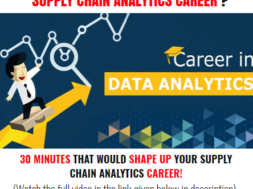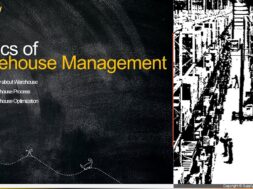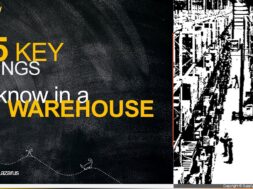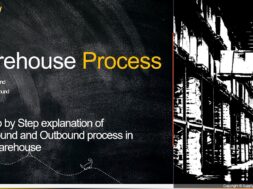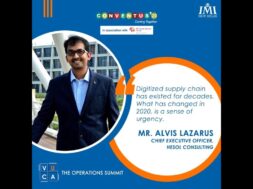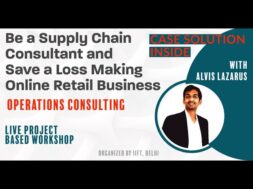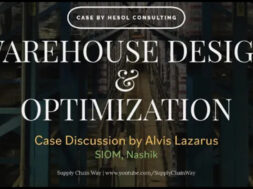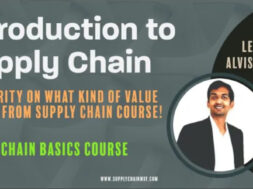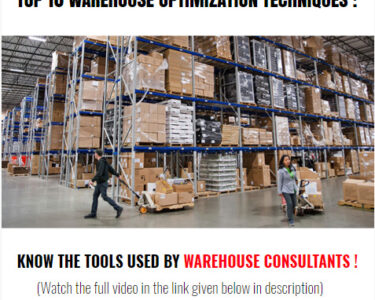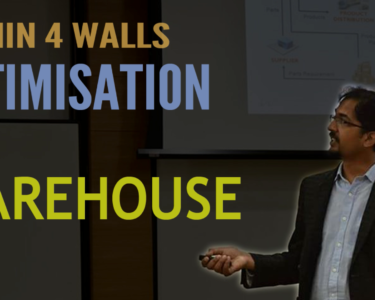Data is a GOLD Mine! How to Build a Supply Chain Analytics
‘How to build a Supply Chain analytics career‘, just reading the topic itself, we will get excited. Before going to the main topic, first we will see the ‘Basic of Supply Chain analytics‘ and ‘How you can make this a great career for yourself‘.
What is Analytics?
There are a lot of definitions available. You can just Google it and see a lot of technical definitions available there. But from my point of view, ‘Analytics leverages business data to solve business problems and make right business decisions’ is ‘Analytics’.
There are three key things of analytics:
- Leverage the business data
- Solve business problems
- Take the right business decision
What are the steps involved in analytics?

The steps are as follows:
- Data collection
- Cleaning
- Data sets
- Analyze
- Results
- Report
As simple as that whatever analytical work you do from collecting the data and cleaning the data is very important. Here we will never get 100% perfect data; in none of the projects you will get clear precise data, so that is where cleaning of data is mandatory. Then you make them into data sets, perform the analysis whatever you want to do, come up with the result and then report that. So all these steps are absolutely critical and these are all the steps involved in analytics.
What is supply chain analytics?
The definition of Analytics and Supply chain analytics are similar, but the difference is in Supply chain analytics, you are going to use supply chain data, which will then help you in supply chain problem solving and also help you in supply chain decision making.
How to Leverage Analytics in Supply Chain?
This is absolutely critical more than knowing about what is Supply chain analytics etc. You should exactly know how I can leverage my analytical ability in Supply chain, such that the Supply chain gets better, that is where you are actually adding value to the supply chain.
Analytics creates an Edge in Supply Chain by doing these list of things, which are as follows:
- Knowing your customers
To know your customer well, you can go through with these two videos:
- Knowing your customers Kano model: https://supplychainway.com/what-is-kano-model-tool-to-capture-voice-of-customer/
- What makes supply chain complex and exciting: https://supplychainway.com/what-makes-supply-chain-complex-and-exciting/
So these two videos will help you to understand how analytics can play a role in helping you to know your customers well.
2. Quantifying the uncertainty in the Supply Chain
As you are aware there are a lot of uncertainties in the Supply chain. It could be demand variability, lead time variability, uncertainties around products in transit and could be uncertainties about the external factors.
Now the supply chain which quantifies that uncertainty well, better than others is going to be a clear winner and analytics play a huge crucial role in quantifying those uncertainties.
3. Supply Chain model and Simulation of key Supply Chain Decisions and the Impact
A tough crucial point here is though failures give a lot of learning, in the Supply Chain it comes with a great cost as well.
4. Risk Management
Now even this Covid-19 situation whichever companies had a good risk management system in place, have actually sailed through this much well and better than other organizations, which don’t have a risk management and analytics has a role here as well. Through analytics, you can actually come up with a list of risks, the impact on your business both operational and financial impact and with mitigation plans do evaluate them and use it to have an analytics player role.
5. Business Performance Management
How is my organization doing, how is my channel partner doing and how are the other stakeholders doing, everything can be measured and tied back to the root of the issue using analytics.
So these are the five key areas where you can use analytics within supply chain, such that it gives an edge to your supply chain.
Now we will come to the two different models:
- Gartner’s model of analytics
- SCAM Model by Alvis Lazarus
These two models are going to help you to understand not just about analytics, about how to shape up your career in analytics as well.
Gartner model:
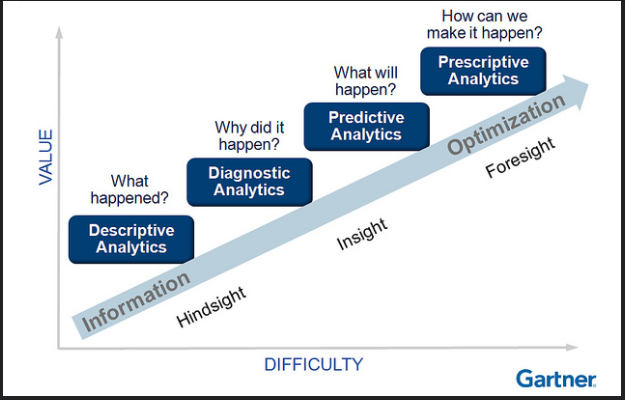
To see the image, there is an x and y axis, put the value and over here you have the difficulty, you can swap these two as well, anyway the graph is going to be a linear graph. So there are four boxes over here:
i) D which means Descriptive analytics
ii) D (another one) which is Diagnostic analytics
iii)P is Predictive analytics
iv) P (another one) is Prescriptive analysis.
So you can remember them as D D P P, this is descriptive, diagnostic, predictive and prescriptive.
Descriptive Analytics
Descriptive analytics is documenting what has happened.
Diagnostic Analytics
Diagnostic analytics is why it does happen.
Predictive Analytics
Predictive analytics is what will happen.
Prescriptive Analytics
Prescriptive analytics is how to make it happen.
In case you are talking about some negative impact on an organization, then how to not make it happen how to basically avoid it that comes on your Prescriptive. So if you really see these two focuses on your data to put insights and sense into the data, these two are futuristic which is talking about what is going to happen and how it’s going to fix, this is a simple explanation of the Gartner model. More you can just Google it and then you can go through it.
SCAM Model:
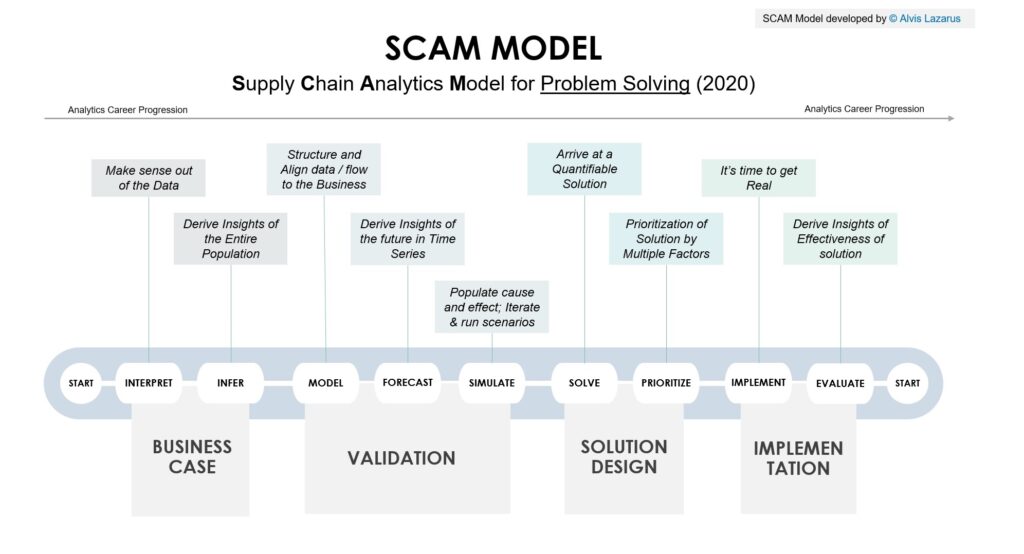
Scam model, which is developed by Alvis Lazarus. The Scam Model elaborates as a Supply Chain Analytics model for problem solving and steps involved in it are as follows:
- Interpret
- Infer
- Model
- Forecast
- Simulate
- Solve
- Prioritize
- Implement
- Evaluate and the step goes on.
Interpret:

In case of interpreting what you’re doing is, making sense out of data.
Infer:
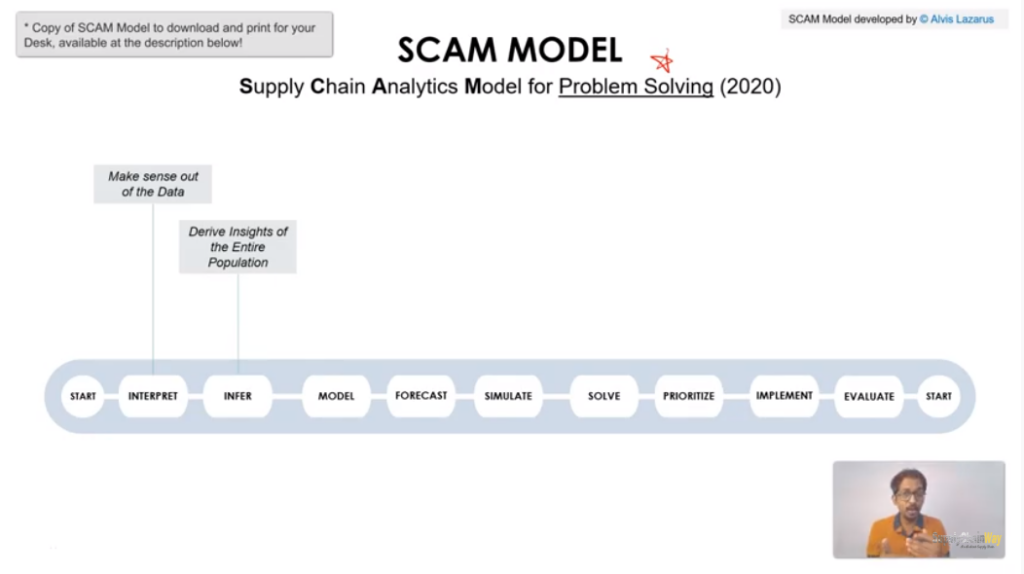
This is where you derived insights of the entire population. For example: if you have a huge population that your data sizes run to millions where you can’t measure, you are taking a sample out of it. So part of infer bases your insights that you got on the sample then deriving insights for the entire population is all about part of the infer. If you are able to measure your complete data sets then the steps of infer don’t exist.
Model:
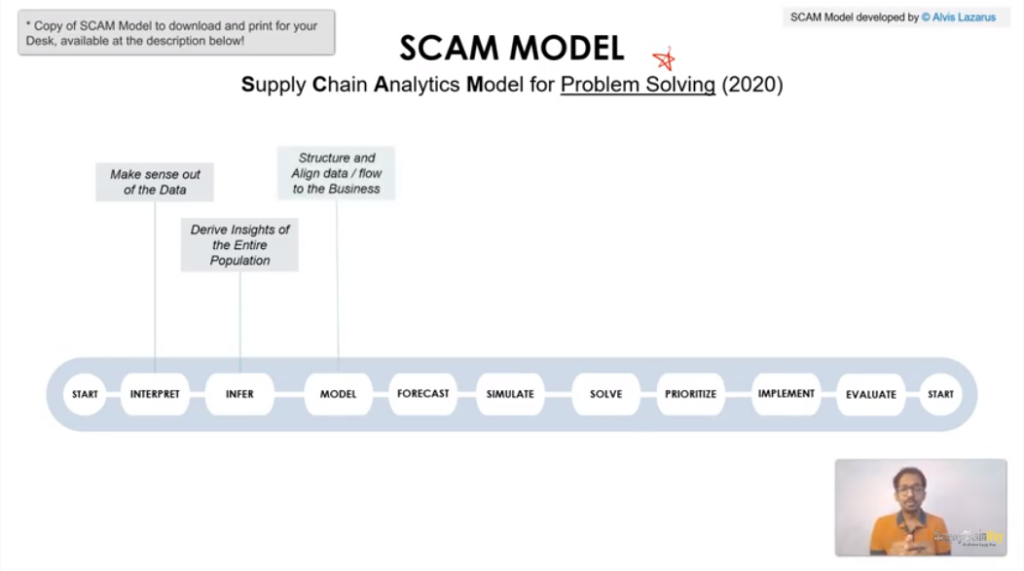
People use this word ‘Modeling’ actually in crux what you do is you are structuring the data in alignment with your business how it is today it is important that is what you do a model. It can be done in excel or software but it should be structured, aligned with the data and flow to the business.
Forecast:
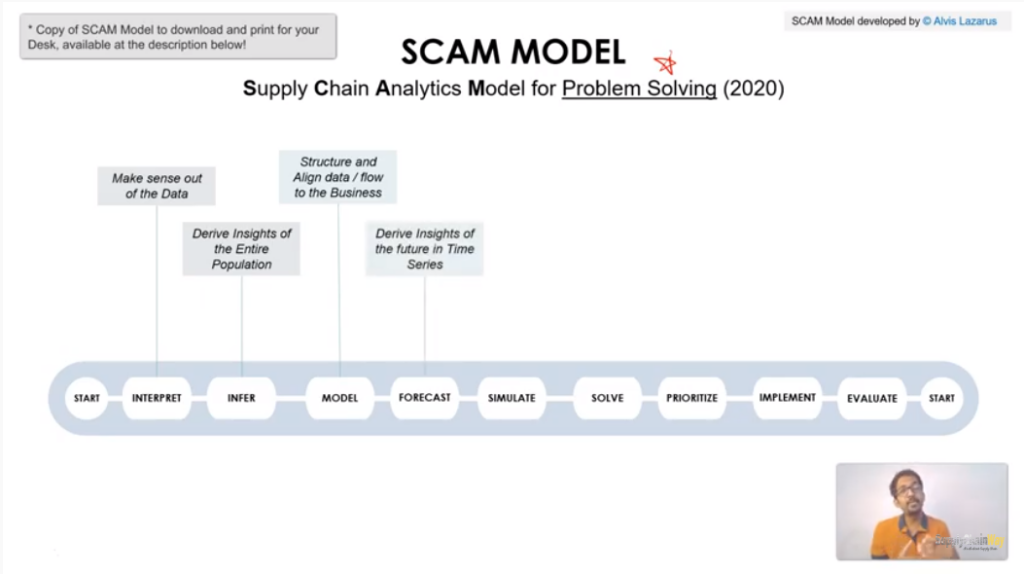
Once you model basically you are having a replica of your business as a model now you start doing insights for the future in time series. I prefer to use the word forecast the reason is predict means, it’s kind of telling it will happen forecast is little more precise it’s still in a time series way.
Simulate

This is where you are coming up with the cause and effect relationship. I trade and run many scenarios before you actually take some decision making and make that as a reality. This area is the most exciting phase if you are an analytical person this will excite you a lot because you’re building a model, forecasting what is going to happen, you simulate things and can observe the whole thing. Now when you try to implement it or compare between what you estimated and what is happening it is going to be a lot of fun.
Most cases people are interested over here what are all the results.
Solve:
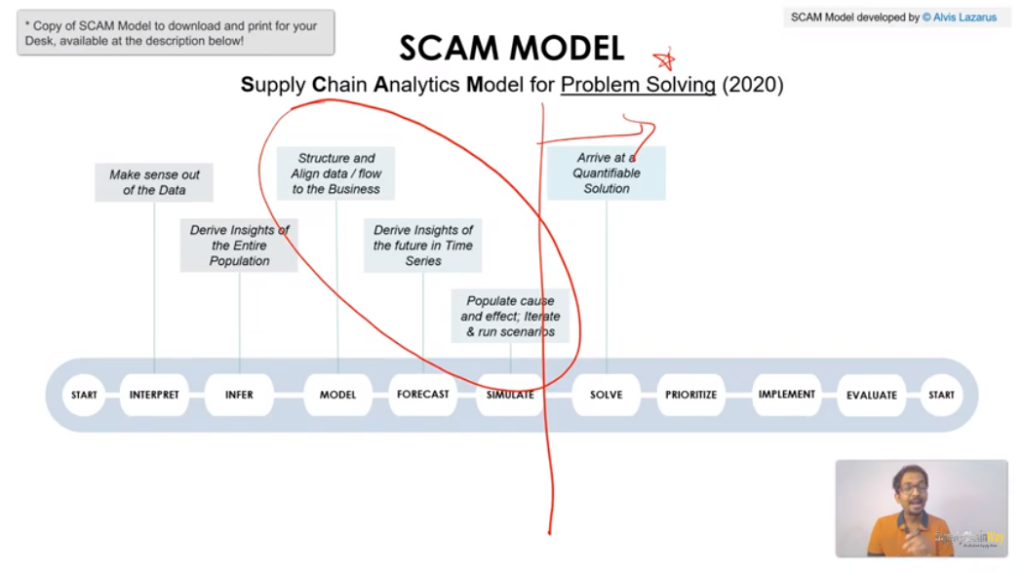
1. Arrive at a quantifiable solution
- Prioritizing the solution by factors (mandatory)
There is not one defined way of solving anything in the Supply Chain. You may come with multiple options and steps now this is where you need to come up with which is going to yield me maximum returns which I need to pump in capital but it is going to yield greater benefits.
Prioritization:
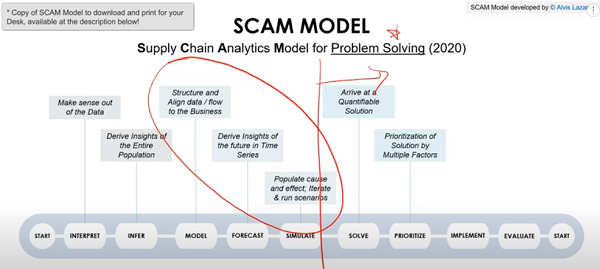
You need to do is what analytics plays a role here.
Implement:
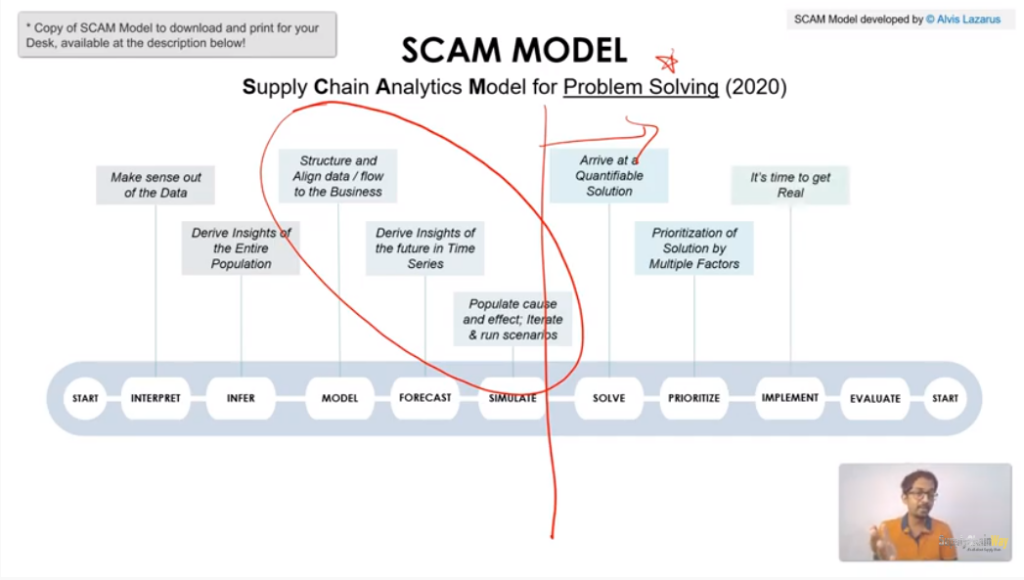
That is the time to get real with whatever you have identified.
Evaluating:
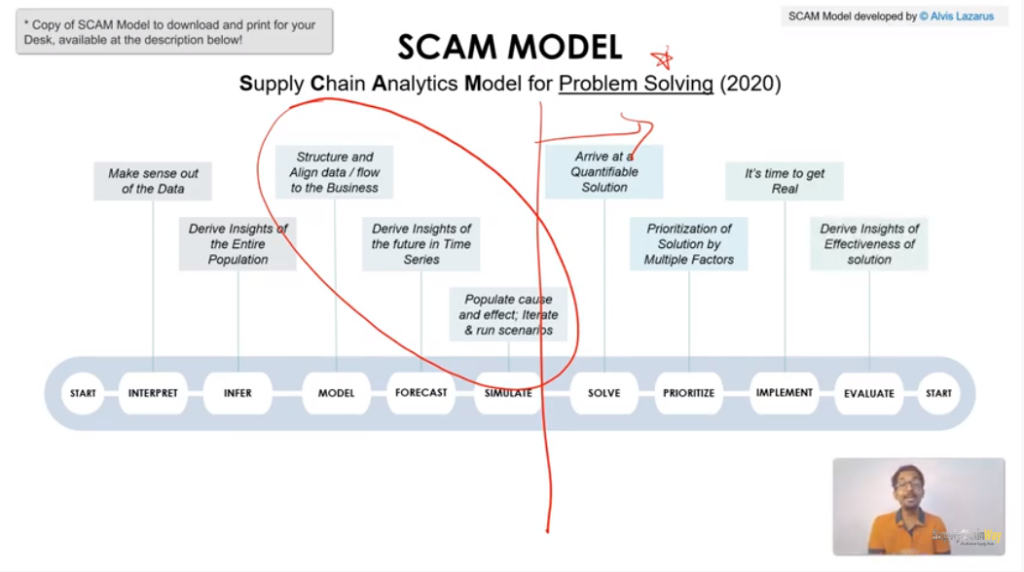
Evaluating the results is very important where most organizations fail to do this because that is where analytics plays a role in evaluating the insights on effectiveness of the solution.
It does not stop here but again goes back and starts from the first step: that is why analytics is an evergreen field because you have always worked. This is a continuous process you need to understand each of this crucial steps but where most people, organization, and client will be interested over here. So this is absolutely critical but for you to perform here well and this entire portion will be important unless you are thorough and strong in terms of your data, interpretation, inference and on your analysis it’s very difficult to come up with a right solution as well.
There are typically four phases in any project, they are:
- Business case
- Validation
- Solution Design
- Implementation
Top Analytical Software in the Market
Here you will think you are going to learn top three tools and have a great career. Yes, you will have a great career, but I am not going to tell you which all are the best tools. The reason is which ever tool which is famous in market now may not even existed 10 years before and probably may not exist from 10 years now. Many people invest a lot of time in making an array of certificates but when it comes to problem solving, they struggle to solve it. Software is important but prior to that you should have the ability of:-
- Problem solving
- Functional knowledge
So these two are framed as Methodology.
Methodology
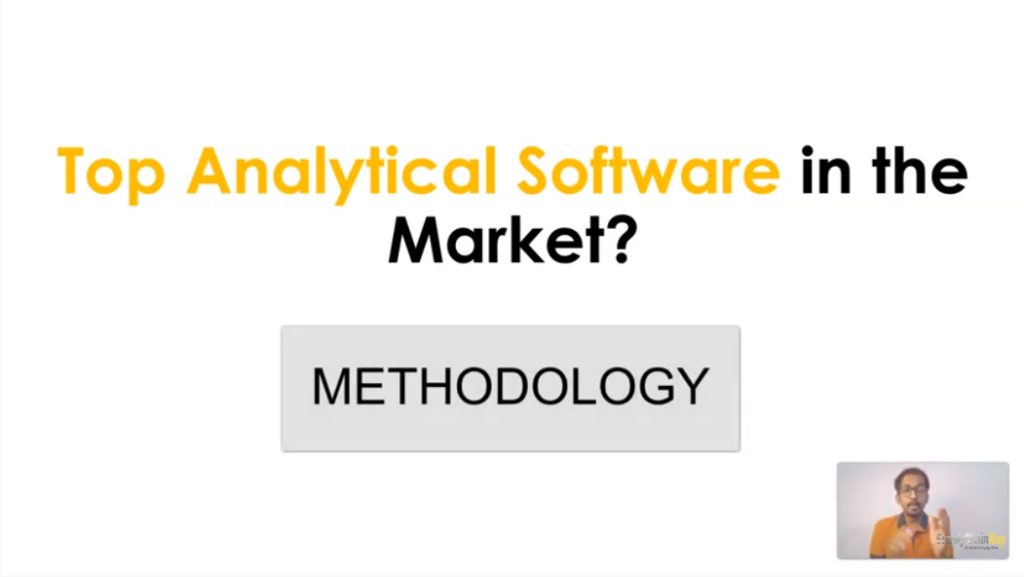
The Methodology is very crucial, with that ability you can even take a piece of paper and write the algorithms and model, structured that and then you can put that into a tool. There is no software which directly gives you a solution on hand. It is your methodology which uses a software as a lever and then to present the right solution to your business or clients.
Software Vs Methodology
Start with methodology and choose the different tools which will help you to make your methodology a reality in an efficient way. There is another insight: a lot of software comes with pre-built models but building your own models and using some of the models existing whenever you have a quick solution to be arrived at you use a model to get the data. In that case software will look like a magic box to you.
How to have a Successful Analytics Career?

Before stepping into a superstar career in analytics , let’s see an example : if you are going to an astrologer, he will talk about your past, personality and also he predicts your future. When the astrologer explains your past he made a lot of blunders now will you believe in what he says about your future absolutely not correct but when he says exactly about your past and personality you will be excited. Wow he’s great and then he tells after 30 years this is what you will be at this point you will feel oh no 30 years because you are interested in knowing what will happen immediate and then in a sequence of time. If he says something as immediate and that has become a reality then that astrologer is going to become like a superstar in your life where you are going to go back to him every now and then to get some insights. This is the same thing which happens in your career as well as an Analytician.
Now to keep the first step and grow confidence in your organization or with your clients, always keep your data ready and present it in a clear way with the maximum insights. This is your first and best impression.
The second thing we can say forecast rather than prediction because prediction can happen at some point of time when you say forecast it should tell what will happen by at time series as an analytician you should use the word forecast because you need to exactly forecast the events which are going to happen on a time series way. We should do all the above said points as an analytician to have a successful analytics career.
- It is not important that we play either junior role or cxo role and nobody bothers about which model which tool does nothing to bring the results on to the table which is possible only by being a problem solver.
- You have a team player ability to influence bigger teams and make them go towards a single target.
If you are able to do these two things and have the analytical ability you will have a fast track career. And this is a secret result to have a successful analytics career key roles and designations in analytics.
Key Role / Designations in Analytics
What are all the designations available in an analytical career, how does it look like and how designation should not misguide you?
Let’s see this explanation through Alvis Lazarus’s Scam model.
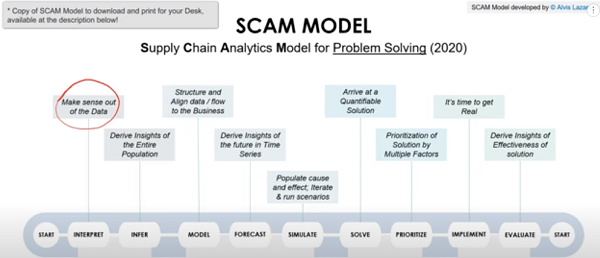
If you see the picture at the start of it is called Make sense out of data where you have to collect the data which is the first and most crucial role. It is a Data Architect one of the most crucial role. Have a proper plan to collect the data, that is a measurement plan of what, how and how long it will take to collect to go to the next level. So this is the job of a Data Architect and it is completely a field job. It is also called as Data Engineers but I prefer to use the word Data Architect, because actually they are structuring the plan and collecting the data.
Once we get into the modeling phase forecasting and simulating and that is where you get into the role of a Data Scientist though they are called Data Scientists they will be doing the analyst and architect role. The only differentiation between Data scientist and Data analyst role is about you using the developed models or are you developing models. If you are using some of the existing models then you are a Data Analyst. If you are building models you are doing a lot of research this is where you are becoming a Data scientist. The next one the most exciting the visible changes in your organization all will happen on solution design and implementation.
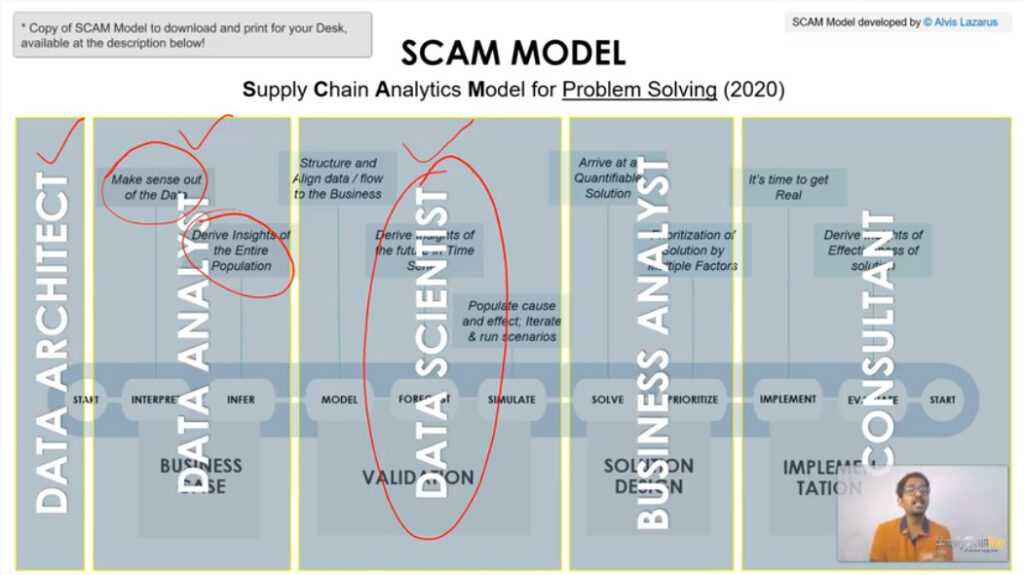
- Solution Design which is done by a Business Analyst. The business analyst is the role where data analytics and functional knowledge come together the most needed thing in the market.
- If you work both the data architect analyst and the data scientist to get the data. You also know the functional thing to drive the solution design not just that part of these three roles you can also acquire functional knowledge and you can do a Business Analysis role as well.
- The last point is where you are implementing you become a Consultant either Internal consultant or an External consultant where you are giving that analytics consulting as a service.
Apart from these points, a very important point is we are not supposed to be carried away by the designation whether we are doing Data analyst role or we are doing Data scientist role. Some small organizations have merged, probably business analysts and Data scientists but these kinds of overlap tend to happen depending upon the size of the company.
Hope this article will be helpful to you all and please leave your valuable comments in the comment section.
If you have any further clarifications or any question, please feel free to reach me on:
https://youtube.com/supplychainway/
Wish you all the very best in your career!!!
